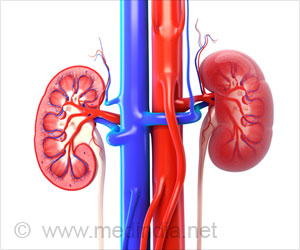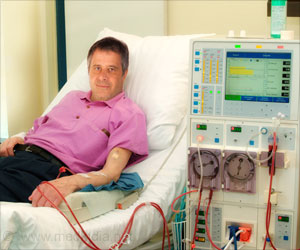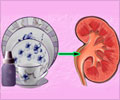Highlights:
- Stage 4 and 5 kidney disease patients have a higher risk of dialysis at 30 days post-TAVR.
- Transcatheter aortic valve replacement (TAVR) is a treatment option for patients with aortic stenosis who are not suitable for surgical valve replacement.
- Study finds that the high-risk group represents a small minority of the entire TAVR population, less than 6 percent of the patients.
Kidney disease and valve replacement
Kidney health is often a representative of a patient’s overall health. Chronic kidney disease (CKD) is a risk factor for heart diseases but the development of CKD is often secondary to many other diseases that are related to heart disease, such as high blood pressure and poorly controlled diabetes. Many of these patients have aortic stenosis, which requires a valve replacement.Transcatheter aortic valve replacement (TAVR)
TAVR is a minimally invasive procedure wherein the aortic valve is replaced without removing the damaged valve. A catheter is used to deliver the replacement valve to the site of the old valve. After the replacement, the new valve begins regulating blood flow. This procedure is generally for patients with poor health conditions where an open-heart valve replacement may be too risky.Study Overview
“The findings will help physicians and patients with chronic kidney disease make more informed decisions about whether patients are good candidates for TAVR”, said lead researcher James W. Hansen, DO, structural interventional cardiology fellow at the Lahey Hospital and Medical Center in Burlington, Massachusetts.The data was collected from the Society of Thoracic Surgeons / American College of Cardiology TVT Registry and included 44,778 non-dialysis patients who underwent TAVR from 2011 to 2015.
Patients were divided according to their stage of kidney disease. The least severe stage (stage 1 and 2) of kidney disease was considered the control group. The stages of kidney disease were measured by how much blood can be filtered by the kidney in a given period of time.
Study findings
- Stage 5 chronic kidney disease patients: More than one-third of patients required dialysis within 30 days post-surgery and almost two-thirds required it at one year.
- Stage 4 chronic kidney disease patients: One-third of the patients died within one year of TAVR, with about one-sixth required dialysis.
- Stage 3 chronic kidney disease patients: 2.2 percent had newly started dialysis 30 days post-surgery and 3.5 percent had started dialysis one year post-surgery.
- Stages 1 and 2 chronic kidney disease patients: 0.7 percent had newly started dialysis 30 days post-surgery and 1.2 percent started dialysis one year post-surgery.
The study overall suggests that only patients with advanced chronic kidney disease (stage 4 and stage 5) suffer from high rates of dialysis and death post-TAVR.
Reference:
- James W. Hansen, Andrew Foy, Pradeep Yadav, Ian C. Gilchrist, Mark Kozak, Amanda Stebbins, Roland Matsouaka, Sreekanth Vemulapalli,Alice Wang, Dee Dee Wang, Marvin H. Eng, Adam B. Greenbaum, William O. O’Neill. Death and Dialysis After Transcatheter Aortic Valve Replacement : An Analysis of the STS/ACC TVT Registry. JACC: Cardiovascular Interventions (2017) https://doi.org/10.1016/j.jcin.2017.09.001
Source-Medindia
















